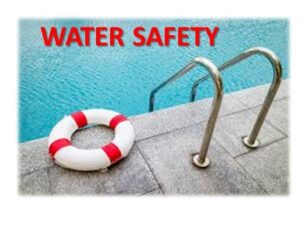Katy Pool Techs offers some water safety tips
Let's prevent drownings this summer

In honor of the month of May, national water safety month, this blog will be dedicated to drowning prevention.
Drowning, despite how movies portray it with a lot of splashing and screaming for help, is a very silent and quick event. Drowning often involves no sound or splashing and can happen in as little as 20 to 60 seconds. Each year in the US, the death toll from drowning is, on average, 3,500 to 4,000; this means an average of 10 people drown daily. Thus, our blog is dedicated to informing everyone of a few protocols that can help prevent these tragedies.
General Tips:
- Swimming Lessons
Learning to swim can reduce the risk of drowning by 88%, especially in children. Here is a place to find swimming lessons for you or your child: click here
2. Becoming CPR certified or learning the basics of CPR
3. Wearing a Life Vest
In the US, 4000 people a year die in boat-related drownings. State law states that all occupants must wear a properly fitted Coast Guard-approved life vest when running the boat motor. A life vest is also recommended if you are not a great swimmer, in the ocean or murky water.
Preventing Drownings For Children Specifically:
- Build/Construct Fence around Pool
The combination of children and pools is dangerous. A way to alleviate some danger is by having a gate around the pool at least 4 feet high with child safety latching locks the child cannot reach. In Texas, most homeowner associations require all access gates to the backyard must have self-latching locks. Constructing a gate around the pool would help prevent children from falling into the pool while a parent fetches something quickly or if the child wanders outside. Still, an adult should ALWAYS be at the pool if a child is in or near the pool.
2. Keep child-proof locks on doors or gates to the outdoors out of children’s reach.
This is to keep children from wandering outside when a parent looks away. Another thing to note is that if the backdoor has a doggy door, child-proof it so the child cannot sneak outside unnoticed.
3. Assign a Designated Adult Pool Supervisor
When children are swimming, having a designated adult supervisor is the best way to ensure no one assumes the other parents are watching and creates confusion. This way, there is no miscommunication which can lead to a child drowning.
4. No Diving into pools.
Most home swimming pools are not deep enough to allow people to safely dive into pools. If you have a no-diving policy, it protects everyone from concussions, chipped or knocked-out teeth, spinal injuries, and even death.
5. It is not recommended to use arm floaties and or floats with children.
People tend to get too comfortable with their child being in the water with floaties. Kids can slip them off, or they could fall off of rafts, etc. Always be near your child when using any floatation devices.
A pool and the hot summer go hand in hand and can be tons of fun. The goal is to ensure everyone takes the extra few seconds to double-check for safety. Have FUN and SWIM SAFE!


